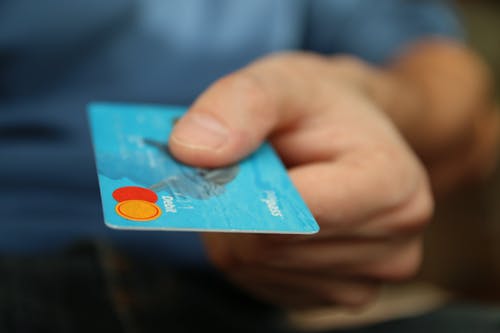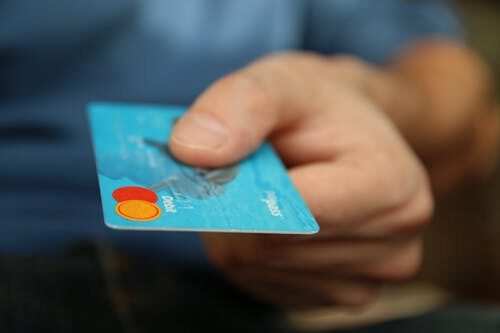Credit cards are handy pieces of plastic that allow consumers the ability to purchase items they otherwise would be incapable of purchasing at one time. If used incorrectly, however, credit card spending can easily get out of hand and cause far more problems than they are worth.
So, how do you manage credit card spending, so it doesn’t get the best of you? Follow these five strategies for keeping your spending in line.
Use Less Credit Than You Have
Stated by a Austin credit repair expert, every credit card comes with a credit limit – the total amount of money you can access by using your credit card. The credit limit is usually three to four times higher than what credit companies expect a purchaser to place on the card.
One of the best tricks to keep your spending in line is never to use more than 30% of your credit limit. If you have a $10,000 credit limit, you should always keep your balance below $3,000.
By limiting how much credit you allow yourself to use, you’ll help yourself stick to an amount that you’ll be able to pay off completely come bill-time.
It’s important to note that the percentage of your credit limit you use also factors into your credit score recorded by FICO, Experian, and TransUnion. As soon as you go over 30%, your credit score will start to go down.
Stay under that percentage, however, and you’ll not only keep your credit score at its current level, but you’ll contribute to its increase, as well.

Pay Off Your Card Each Month
Paying off your card each billing cycle is an important principle that will not only help keep spending down but will help you avoid interest charges, as well. If you only pay the minimum for your card each month, you’ll end up paying much more than your original purchase.
Many credit cards have an interest rate of 21% or higher. What does that mean?
That means, if your monthly statement is $3,000 and you have an interest rate of 21%, by paying the minimum of $35 each month, you’ll end up paying an extra $321 by the time you pay it off in a year – and that’s if you don’t add any other purchases onto your balance.
By paying off your bill each cycle, you’ll keep yourself free of debt and prevent debt from having a chance to pile up.
Stick to a Budget
At their most basic level, credit card purchases are cash purchases that have a deferred due date for payment. Instead of paying upfront, you can pay later in the month, when your credit card statement comes in the mail.
This principle is important to remember for two reasons. First, you aren’t purchasing anything for free. Second, you still have to pay for your purchases.
Credit cards are not intended for purchasing items you cannot afford. Rather, they should be used for regular purchases you have already budgeted and will have the cash flow to pay for at each billing cycle.
Budgets are the backbone of your financial stability. They help you define how much you can spend each month and on what items. Any credit card purchase should fit into your planned budget.
For example:
If you’ve budgeted $100 per week for groceries, then you should spend approximately that much on your groceries – no matter how you pay for them.
If you use your credit card, that amount of money should be deducted from what you have left in your grocery budget. Using a budget app will help you keep track of spending, no matter where you shop or what credit card you use.
Set a Spending Limit
To complement your budget each month, it could be helpful to set a spending limit. Many credit card companies offer you the capability to set a spending cap each month. When you get near the cap, you’ll receive an alert.
When you hit the cap, you won’t be allowed to go past it unless you call and verbally increase your spending cap. While this strategy might not work for everyone, it’s a good fail-safe for those times when you lose track of how much you’ve spent for the month.

Use a Rewards Card
To make the most out of using a credit card, choose a card that offers cashback, rewards points, or travel rewards. While the rewards you earn won’t pay off your monthly bill, they can add some extra cash or spending money on your budget when you earn enough.
Cashback cards are best if using rewards to help pay down your monthly statement. You can dump accumulated cash back right into your account as a credit, and your statement will reflect the total amount owed minus any cashback applied.
Rewards point cards are best if wanting to earn points to spend on extras that you might not be able to put in your budget. Rewards points can be cashed out for gift cards for places such as restaurants, movie theaters, and retail stores.
Travel rewards cards work best for families who are saving up for a vacation. Rewards build slowly, so it takes time to earn enough for a substantial plane ticket, but every point helps if you are planning on a trip anyway.
As with any card, be sure to check the fine print for conditions regarding how long points stay on your account before they expire.

Practice Makes Permanent
Credit cards are wonderful tools if used correctly. If you keep your spending to less than 30% of your credit limit, stick to a budget, and set spending caps, you’re far less likely to overspend during any given month.
By paying your card off each month, you’ll help keep your spending in line and will avoid an unnecessary pileup of debt. A rewards card can be used to pay down your statement or for extra spending cash, gift cards, or traveling when on a budget.
Put each of these tips into practice, and you’ll be well on your way to using credit cards responsibly.

